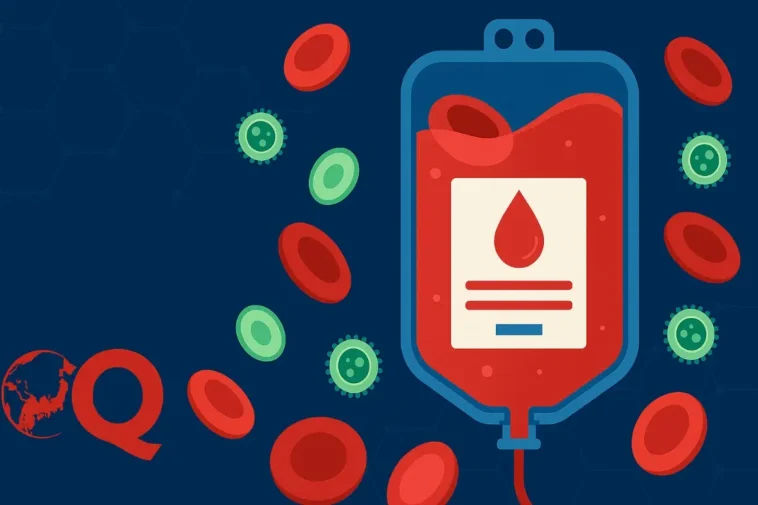In a groundbreaking scientific advancement, Japanese researchers have developed a universal artificial blood product that holds the potential to revolutionise emergency medical care across the globe. Compatible with all human blood types, this innovation is designed to overcome many of the limitations and logistical challenges associated with traditional blood transfusions. With clinical trials already underway, this development marks a significant step forward in transfusion medicine, with promising implications for disaster response, military operations, and healthcare in remote regions.
Table of Contents
The Science Behind Universal Artificial Blood
The artificial blood developed by Japanese scientists contains lab-grown red blood cells and platelets encapsulated in synthetic vesicles. These components are engineered to replicate the two most essential functions of natural blood: transporting oxygen and aiding in clotting. Unlike traditional donated blood, this synthetic version does not carry blood type-specific antigens, making it universally compatible and eliminating the need for cross-matching before transfusion.
This universal compatibility can be life-saving in emergencies, where the time required to determine a patient’s blood type and find a matching donor could mean the difference between life and death. By removing the blood-type barrier, this artificial blood has the potential to be administered instantly in crisis situations.
Advantages Over Traditional Blood Transfusions
One of the most notable advantages of this artificial blood is its shelf stability. Traditional blood requires constant refrigeration and has a limited shelf life, typically between 35 and 42 days. In contrast, Japan’s artificial blood can be stored at room temperature for over a year without losing its efficacy. This feature makes it ideal for use in disaster zones, military operations, and remote areas where access to refrigeration is limited or nonexistent.
Additionally, the artificial blood circumvents the risks associated with blood-borne diseases and immune reactions from mismatched transfusions. This ensures safer, more efficient medical care without the dependency on a constant and timely supply of human donors.
Clinical Trials and Regulatory Progress
Nara Medical University in Japan is currently conducting clinical trials to evaluate the safety and effectiveness of artificial blood in human subjects. The trials involve administering different volumes of the artificial product to healthy volunteers under controlled conditions. These studies aim to assess any potential side effects, measure how effectively the product performs its intended functions, and determine the appropriate dosage protocols.
If the trials are successful, the researchers hope to have the product widely available for clinical use by around 2030. Regulatory approvals, production scalability, and integration into existing medical protocols will be the next steps toward making artificial blood a standard option in emergency and surgical settings.
A Solution to Japan’s Ageing Population Challenge
Japan is one of the fastest-ageing nations in the world, which presents a unique challenge to its healthcare system: a shrinking population of eligible blood donors. The development of universal artificial blood could significantly ease the burden on national blood supplies. By ensuring that sufficient blood stock is available irrespective of donor turnout, Japan can prepare more effectively for natural disasters, population health crises, and the growing needs of its elderly population.
Global Implications and Future Outlook
The implications of Japan’s universal artificial blood extend far beyond its borders. In regions lacking organised blood donation systems, or where conflict and geography make logistics difficult, a shelf-stable, universally compatible blood product could dramatically improve patient outcomes.
Humanitarian organisations, military forces, and emergency responders worldwide are closely monitoring this innovation. Once commercially available, it could be integrated into global emergency medical kits and disaster relief protocols, drastically improving the responsiveness and quality of care during critical situations.
Japan’s breakthrough in developing universal artificial blood is a remarkable achievement in modern medicine. It offers a practical, safe, and efficient alternative to traditional blood transfusions and paves the way for a future where blood availability is no longer a bottleneck in saving lives. With continued research and regulatory support, this innovation has the potential to redefine how we think about emergency care, humanitarian aid, and the role of biotechnology in healthcare.




